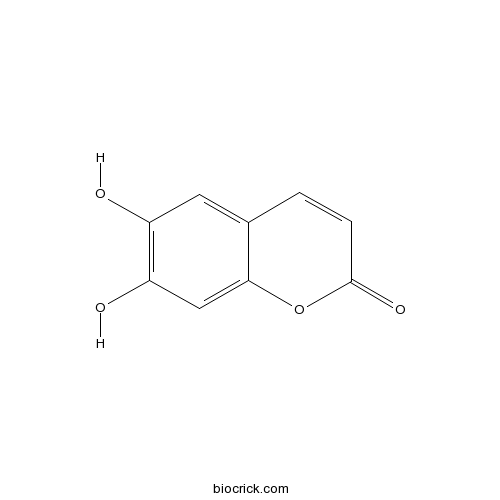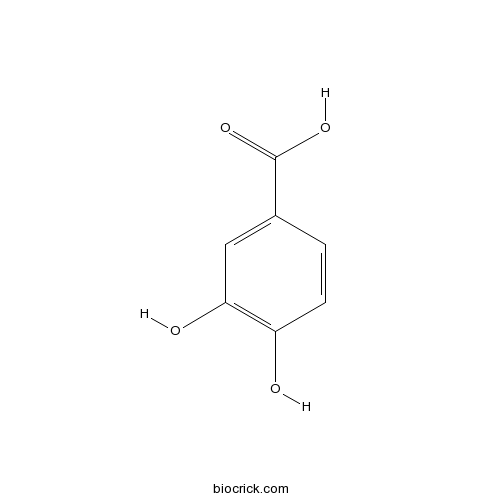Trollius chinensis
Trollius chinensis
1. The products in our compound library are selected from thousands of unique natural products; 2. It has the characteristics of diverse structure, diverse sources and wide coverage of activities; 3. Provide information on the activity of products from major journals, patents and research reports around the world, providing theoretical direction and research basis for further research and screening; 4. Free combination according to the type, source, target and disease of natural product; 5. The compound powder is placed in a covered tube and then discharged into a 10 x 10 cryostat; 6. Transport in ice pack or dry ice pack. Please store it at -20 °C as soon as possible after receiving the product, and use it as soon as possible after opening.
Natural products/compounds from Trollius chinensis
- Cat.No. Product Name CAS Number COA
-
BCN4984
Orientin28608-75-5
Instructions

-
BCN5905
6,7-Dihydroxycoumarin305-01-1
Instructions

-
BCN5560
Acacetin480-44-4
Instructions

-
BCN5813
Pectolinarigenin520-12-7
Instructions

-
BCN3804
2''-O-Beta-L-Galorientin861691-37-4
Instructions

-
BCN4537
3,4-Dihydroxybenzoic acid99-50-3
Instructions

-
BCN4546
4-Hydroxybenzoic acid99-96-7
Instructions

Determination of orientin in Trollius chinensis using ultrasound-assisted extraction and high performance liquid chromatography: Several often-overlooked sample preparation parameters in an ultrasonic bath.[Pubmed: 29153914]
The erratic pressure intensities and cavitation exhibited in an ultrasonic bath pose various during practical application. To achieve the most efficient experimental design, this manuscript aims to discover violently sites that are subject to the effect of slight changes in position on cavitation and ultrasound intensity distributed in the ultrasonic bath. In addition, optimization several often over-looked ultrasound parameters and experimental conditions, are intended to place the reaction vessel properly and operate under suitable experimental conditions to obtain the maximum yield of target analyte. In this study, an investigation of the various ultrasound intensities and cavitation in ultrasonic bath space were conducted with the help of the orientin yield using ultrasound-assisted extraction. Conventional parameters such as the volume fraction of ethanol, liquid-solid ratio, ultrasound irradiation power, time and frequency, and reaction temperature were investigated, all of which affect the extractive yield factors. Also several often over-looked parameters such as the extraction vessel position in the ultrasonic bath base, the distance between the bottom of the extraction vessel and the ultrasonic bath base, the diameter, the shape and the texture of the extraction vessel, height of the liquid medium and the ultrasound propagating medium salt concentration in the ultrasonic bath were tested exhaustively in this study. These results can therefore serve as a guide to optimize the usage of the ultrasonic bath for future applications.
Comparative pharmacokinetics study of orientin in rat plasma by UHPLC-MS/MS after intravenous administration of single orientin and Trollius chinensis Bunge extract.[Pubmed: 29148582]
None
Investigation of the effective components of the flowers of Trollius chinensis from the perspectives of intestinal bacterial transformation and intestinal absorption.[Pubmed: 28502237]
The flowers of Trollius chinensis Bunge (Ranunculaceae), used for respiratory tract infections, mainly contain flavonoids, phenolic acids, and alkaloids; however, the effective components are debatable because of their unclear in vivo activities.
An efficient approach for the extraction of orientin and vitexin from Trollius chinensis flowers using ultrasonic circulating technique.[Pubmed: 28427633]
Ultrasonic circulating extraction (UCE) approach was developed for effective extraction of orientin and vitexin from the flowers of Trollius chinensis successfully. In this study, some parameters potentially influencing the yields of orientin and vitexin were systematically investigated and optimized by Plackett-Burman and Box-Behnken design, and the optimum operational conditions obtained were 60% ethanol volume fraction, 1000r/min stirring speed, 30°C temperature, 28min ultrasonic irradiation time, 10mL/g liquid-solid ratio and 738W ultrasonic irradiation power. Satisfactory yields of orientin (6.05±0.19mg/g) and vitexin (0.96±0.03mg/g) were obtained in a relatively shorter extraction time under the derived optimum conditions, compared to other ultrasonic extraction methods and heat extraction methods. The mechanism of UCE procedure was discussed in detail, to illustrate the advantage of UCE in the extraction process. In addition, no degradation of orientin and vitexin and high reproducibility of the developed UCE method were observed under the optimum conditions. The proposed UCE technique with high-capacity and circulation function is a rapid and efficient sample extraction technique, and performs promising in large-scale sample preparation.
Two new compounds from Trollius chinensis Bunge.[Pubmed: 27421994]
Two new compounds, 2″-O-feruloylisoswertiajaponin (1) and (2E)-2-methyl-1-O-vaniloyl-4-β-D-glucopyranoside-2-butene (2), along with one indole alkaloid and five known flavonoids, were isolated from the flowers of Trollius chinensis Bunge. Their structures were elucidated on the basis of spectroscopic evidence (UV, IR, HR-ESI-MS, NMR).
Pharmacokinetics of tecomin in rats after intragastric and intravenous administration.[Pubmed: 26317973]
The pharmacokinetics of tecomin, which is a potential bioactive compound from the flowers of Trollius chinensis, was studied. The results showed that this compound was easily absorbed and rapidly metabolized into veratric acid in vivo, and then the latter was eliminated slowly. In addition, the simulant in vitro gastrointestinal transformation experiments demonstrated that the basic enteral environment and intestinal bacterial flora also contributed to the metabolism of tecomin to veratric acid.
Separation of phenolic acids and flavonoids from Trollius chinensis Bunge by high speed counter-current chromatography.[Pubmed: 26262599]
In this work, eleven compounds were successfully separated from Trollius chinensis Bunge by using a two-step high-speed counter-current chromatography (HSCCC) method. NRTL-SAC (nonrandom two-liquid segment activity coefficient) method, a newly developed solvent system selection strategy, was applied to screening the suitable biphasic liquid systems. Hexane/ethyl acetate/ethanol/water (3:7:3:7, v/v) solvent system was used in the first step, while the hexane/ethyl acetate/methanol/water (1:2:1:2, 1:4:1:4, 1:9:1:9, v/v) systems were employed in the second step. The chemical structures of the separated compounds were identified by UV, high resolution ESI-MS and MS/MS data. The separated compounds are 3,4-dihydroxyphenylethanol (1), vanillic acid (2), orientin (3), vitexin (4), veratric acid (5), 2″-O-(3‴, 4‴-dimethoxybenzoyl) orientin (6), 2″-O-feruloylorientin (7), 2″-O-feruloylvitexin (8), 2″-O-(2‴-methylbutyryl) vitexin (9), 2″-O-(2‴-methylbutyryl) isoswertiajaponin (10), 2″-O-(2‴-methylbutyryl) isoswertisin (11). The results demonstrate that HSCCC is a powerful tool for the separation of compounds from extremely complex samples.


